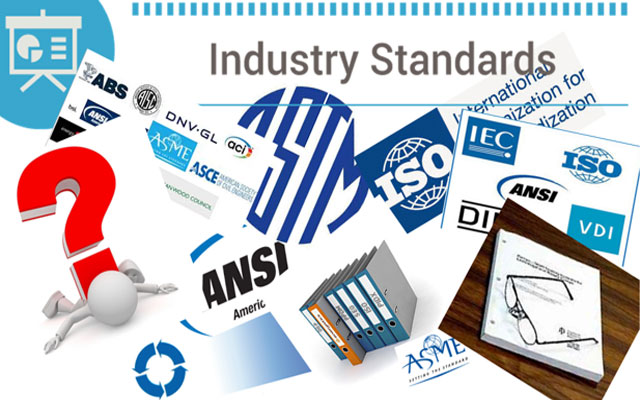Author: Henri Azibert
Sometimes there seems to be Industry Standards for just about anything. Whether they cover consumer products or obscure industrial equipment, there is some standard to impose ambiguous requirements and increase costs. Founded in the late nineteenth century, ASTM (American Section of the International Association for Testing Materials) and ASME (American Society of Mechanical Engineers) predate other standards organizations, such as the British Standards (BSI), the International Electrotechnical Commission (IEC), the German DIN, the American National Standards Institute (ANSI), and International Organization for Standardization (ISO), founded in 1947. And these are just a few of the most prominent organizations. ASTM alone has published over 12,000 standards just on testing materials. It is easy to be overwhelmed with the multitude of standards and standards organizations.
There are different types of standards that cover a multitude of aspects of our modern lives and endeavors, but the ones listed below tend to be the most common for Industry.
- Testing standards: they provide a method to test products or materials. The main benefit is the resulting ability to compare various products effectively and accurately.
- Performance standards: they establish certain minimum performance requirements that are usually measured using a specified test procedure or standard. Products that are certified to meet these standards assure the user that certain minimum performance aspects will be met.
- Dimensional standards: they establish a number of key dimensions that must be met. This allows product interchangeability. (Would it not be great if we could travel throughout the world and could dispense with the various plug adapters needed to power our electric appliances?!)
- Quality standards: they describe certain characteristics that must be met, insuring the buyer that some minimum level of quality is met.
The details of the process to publish a standard will vary somewhat among the various organizations, but they generally follow some well-established procedures. Typically, a group of experts will collaborate to develop a standard that has been deemed useful to their technical community. Successive drafts are created to capture the information relevant to the topic, and when a final draft is completed, a ballot process is used to obtain and document acceptance of the content of the standard by interested parties. Typically, they are users, manufacturers and individuals who have a demonstrated a general interest. Votes, positive or negative, and comments are submitted. Negative votes must be resolved for the standard to be issued. The ballot process is repeated until the required number of affirmative votes is reached. Substantive comments, directed to requirements imposed by the standard, must be addressed. By far, the great majority of comments tend to be editorial in nature, and although usually readily accepted, they do not need to be agreed to. Standards need to be reviewed periodically to ensure that they remain current. A five-year review period is common.
There are some characteristics that inherently result from this process. Standards tend to look backwards to validate and document what has worked well for a long period of time. A consensus must be reached, so only mainstream positions or agreements are captured. Promoting innovation is not a benefit of the standards process; quite to the contrary, it promotes the status quo.
Within a standard some parts will be normative and some informative. The normative provisions must be followed to be able to assert that a certain product or device meets the standard. Often there are also informative sections, frequently relegated to appendices, that will give additional information and explain why certain requirements are specified. This can be one of the major benefits of standards, where expert opinion and knowledge is documented, and made available to the general engineering community.
There are many organizations promulgating standards related to pumps. In North America, we have the American Petroleum Institute (API 610), for refinery pumps; the Hydraulic Institute that provides standards over a broad range of pump subject matter, from testing to nomenclature to performance, ANSI/ASME B73 primarily for chemical processing pumps, and ISO 3069 – its counterpart in Europe. These are just a few of the more important ones.
One problem that can be encountered results from the overlapping jurisdiction of the various standards organizations. Two or more standards may apply to one product type. Although requirements might be similar, they are not exactly equivalent. In testing standards, the number of cycles or test equipment could differ requiring manufacturers to conduct multiple tests. In performance standards, the limits could vary; even the units used in measuring results can be totally different, requiring special measuring equipment. Not only can this result in confusion, but also in increased costs to manufacturers, and consequently to the users.
Harmonization of standards is a challenge, especially as the markets are more and more global, and different languages can be a barrier to common understanding.
But standards provide a level playing field for all manufacturers. Testing standards help in product verification, and when deficiencies are noted, required design changes can be identified. Without standards, manufacturers might miss certain design or manufacture precautions that could result in safety or performance issues.





Comments